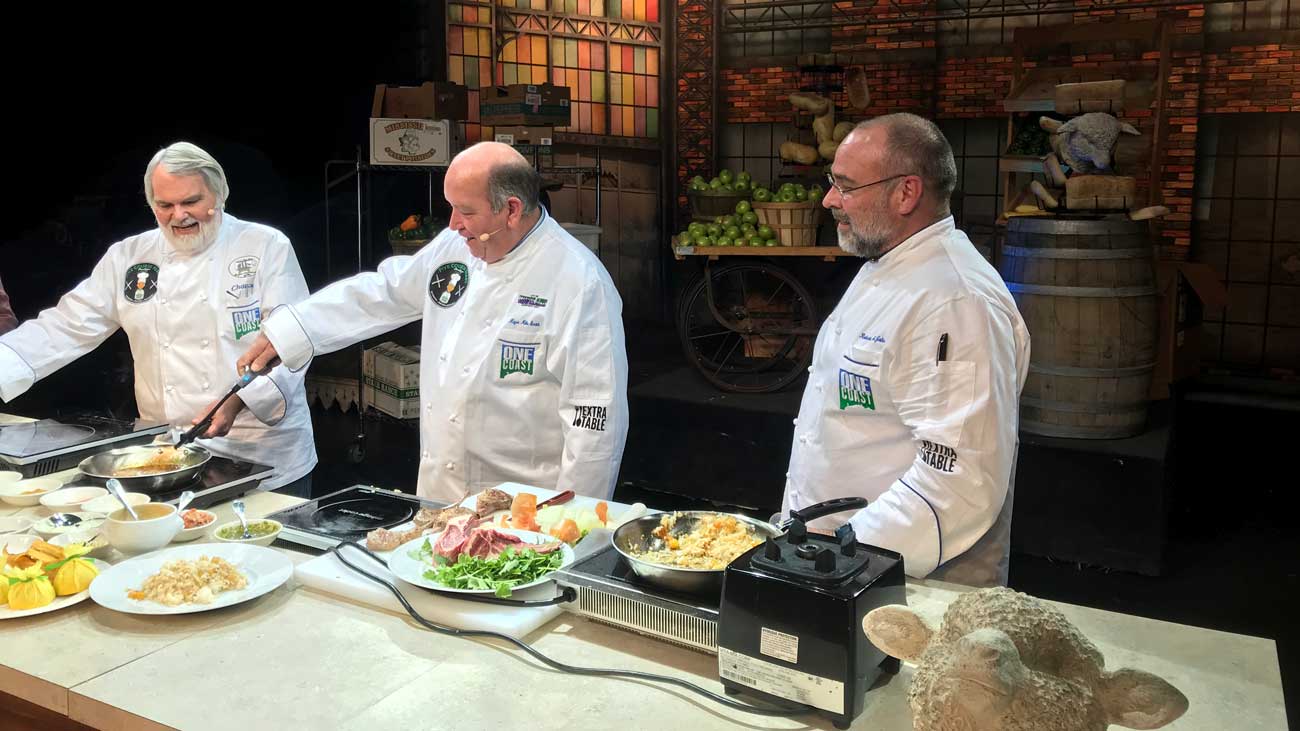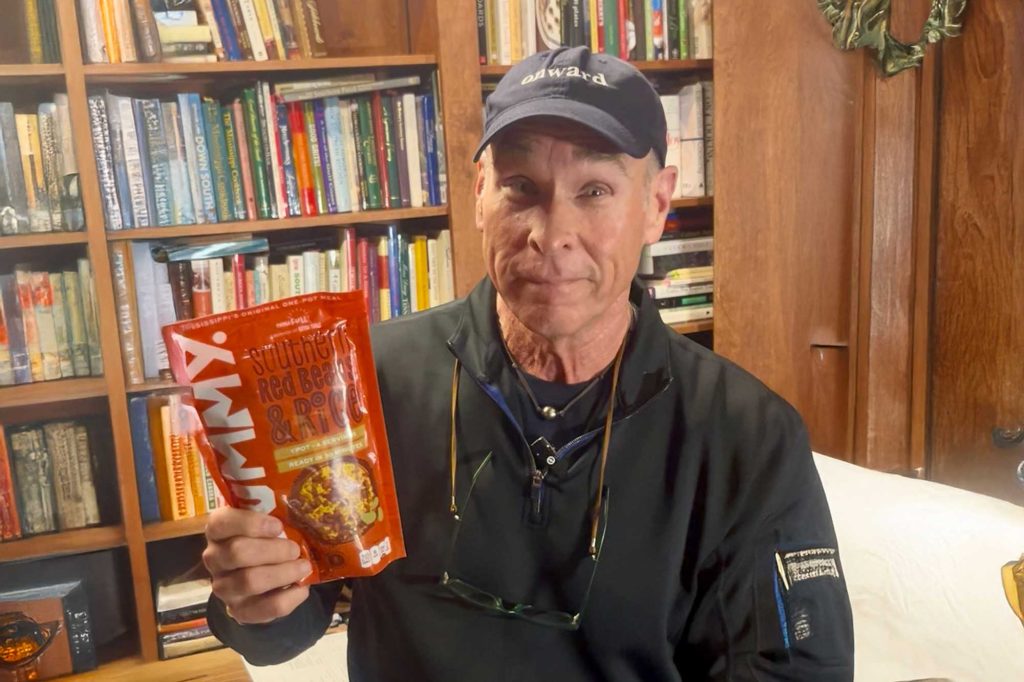I am in the early stretch of a one-year, 30-country, tour of Europe. By the end of this journey— if I do my job correctly— I will have written two books, hundreds of blogs, and completed a few magazine assignments, while eating my way across the continent.
By the end of the year, I had hoped to lose 30 pounds— one pound for each country visited. While in Denmark, Germany, and Austria, 30 pounds seemed like an easily reachable goal.
Then we crossed the border into Italy.
Arrivederci, 30-pound loss— Buongiorno, Stairmaster.
Germany and Austria are the only two European locales I had visited before this trip. In 1993, Sysco, the foodservice distributor, gave me a trip to Germany as a wedding gift. My wife and I tagged along with a group of foodservice executives at the expense of some national food brand.
We were extremely grateful for the trip. It was free, and there was no way, as newlyweds, we would have been able to afford it. The sights were nice, the friends we met were interesting, but the food was nothing to write home about.
Ultimately, we were very underwhelmed with Bavarian cuisine.
Nothing much has changed. I am a huge fan of most things porcine, but the pork dishes we ate in Germany and Austria were about as bland and boring as any dish can be.
Just as our taste buds were taking their own sabbatical, we crossed through the Brenner Pass in the Italian Alps— one of the, if not the most, beautiful drives I have ever made— and drove into Bologna. It was after my very first meal— at a small, run-of-the-mill sidewalk café— that I knew a 30-pound loss was going to be a challenge.
My friend, and dedicated Italophile, David Trigiani— a dual citizen American/Italian, by the way— says that Bologna is the culinary capital of the world as far as he is concerned. So far, I agree.
Bologna is a funky, vibrant town with a Vespa in every household and an osteria at every turn. It has centuries old architecture, miles of arcade-lined sidewalks, and an impassioned citizenry who love life and excel in food.
About midway through my first meal in town, I pulled out my calendar and tried to figure out how I could squeeze in another few days in Bologna later in the year. It was about halfway through his first street-side gelato that my son considered a permanent move.
The people of Bologna live their lives with passion. It’s in the food, it’s in the table chatter, and it’s on the street— passion. I love that.
In Bologna, we never ate in a restaurant that had been open less than 35 years. It wasn’t the plan, it just happened that way. The average tenure for an American independent restaurant is less than four years, and 90% are closed after five years. Here in a town that knows and loves food, most places are staying open for decades. It’s the passion.
The culinary highlight of the trip was a lunch at Osteria Dell ‘Orsa. For 37 years this out-of-the-way cafe has been serving excellent pasta and Bolognese specialties.
It was a small place tucked away on what we would call an alley, nowhere near any of the main foot traffic, but it was packed. They had four communal tables inside which sat six to eight people each. And 12 tables outside across the alley.
Osteria Dell ‘Orsa reminds me of Café Maspero in New Orleans, at least in it’s attitude. It’s one of those places that shuns normally accepted restaurant practices but pulls it off. It is apparent that the employees love where they work, and they should. The food and service are excellent.
The Bolognese eat their namesake sauce with tagliatelle, not spaghetti, and the Tagliatelle Bolognese at Osteria Dell ‘Orsa is as good as it gets.
While in Bologna, I arranged to film and prepare Bolognese Tagliatelle with a Bolognese chef in his kitchen. We filmed the segment and everything went well, everything except that the cameraperson— my wife— forgot to turn on the video camera.
When you go— and you need to go— stay at the I Portici Hotel. It was very nice, well situated, and inexpensive (89 euro per night).
Onward
Follow Robert St. John’s Eating Europe at www.robertstjohn.com
Pesto Pasta with Roasted Portabella Mushroom Strips and Asparagus
For the Portabella:
1 cup creamy balsamic dressing
2 tsp minced garlic
1/2 cup vegetable broth
2 tsp creole mustard
1 tsp hot sauce
2 tsp creole seasoning
1 tsp fresh ground black pepper
2 tsp Worcestershire sauce
5-6 fresh portabella mushrooms, stems and gills removed*
Combine the first 8 ingredients in a mixing bowl. Dip each portabella mushroom in the mixture to coat them completely. Refrigerate for 1 hour.
Preheat oven to 350 degrees.
After the mushroom have marinated, place them on a baking sheet with the top side down. Cover the baking sheet completely with aluminum foil and bake for 7 minutes. Remove the foil and bake for 5 more minutes. Allow the mushrooms to cool, then cut them into 3/4 inch wide strips.
For the asparagus
1 lbs Asparagus, fresh
2 Tbl Olive oil
1 tsp Salt
1/2 tsp Pepper
Preheat oven to 350 degrees.
Toss the asparagus with olive oil, salt and pepper. Place on baking sheet lined with wax paper. Bake 12 minutes. Remove from oven and sprinkle the almonds over the asparagus.
Pesto
3 cups loosely packed basil leaves, washed and dried very well
1/3 cup pinenuts
1/4 cup parmesan cheese, freshly grated
1 Tbl garlic, minced
1 tsp kosher salt1/2 cup extra virgin olive oil
In a food processor, combine the basil, pine nuts, cheese, garlic and salt and puree. With the processor still running, slowly drizzle in the olive oil. Remove the lid and scrape down the sides of the processor to make sure there are no large pieces of basil, puree for another 30-40 seconds. Use immediately or refrigerate covered with plastic for up to 4 days. The plastic wrap should be placed directly on the surface of the pesto to prevent discoloration. Pesto make also be frozen in an airtight container and held for one month.
For the pasta
1 pound Bowtie pasta
2 Tbl unsalted butter
1/4 cup chicken or vegetable broth
3/4 cup fresh pesto
1/2 tsp salt
1/4 tspfresh ground pepper
3/4 cup Romano cheese, coarsely grated
Cook the pasta according to the directions on the package, drain and rinse with hot water.
In a large sauté pan, melt the butter over medium heat. Place the cooked mushrooms in the pan and heat for 3-4 minutes. Add in the broth, pesto, salt and pepper. Add the cooked pasta to the pan and mix well so that the pasta is evenly coated with the pesto.
Divide the pasta onto serving dishes, and sprinkle the pasta with the shredded Romano cheese.
Divide the asparagus among the serving dishes and serve immediately.
* the gills are on the under side of the mushroom and become tough and bitter when cooked. They are easily removed by gently scraping the underside of the mushroom with a teaspoon.



